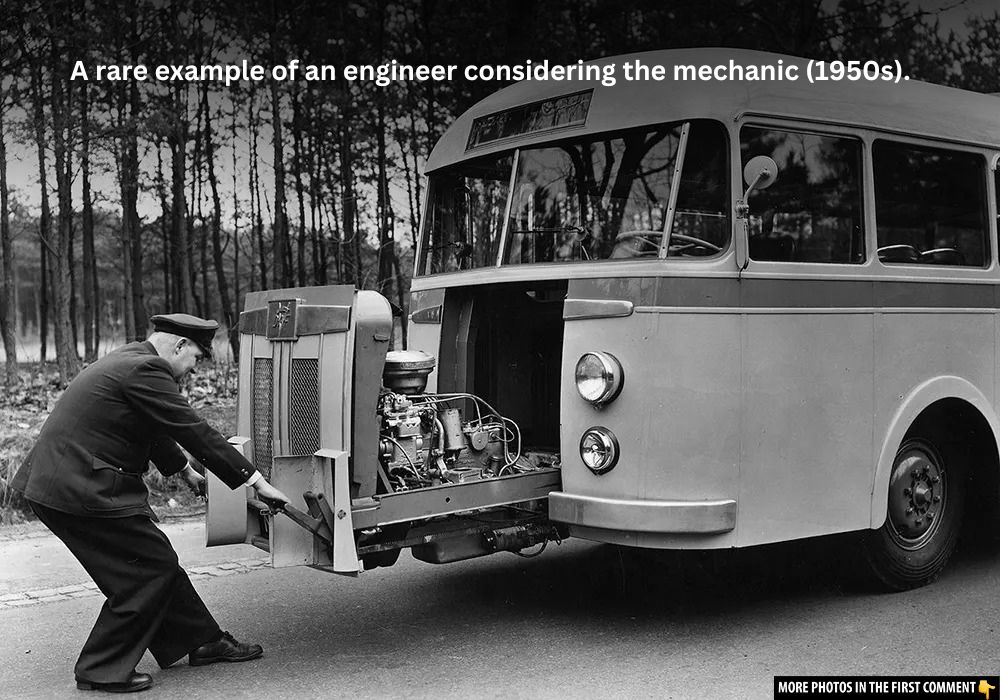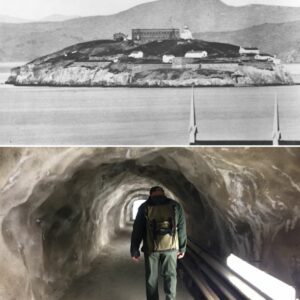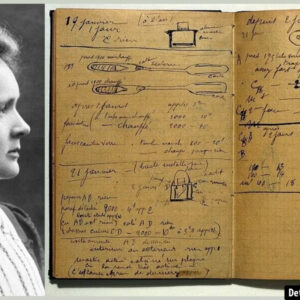In the world of automotive engineering, innovation often goes hand in hand with practicality. In 1949, DAF Trucks introduced a groundbreaking design with the DAF-Domburg Bus, featuring a slide-out engine intended to simplify maintenance. While this bold innovation ultimately faced challenges, it remains a testament to the company’s forward-thinking approach to vehicle design. The story of this bus is more than just about an engine – it’s about how automotive design strives to balance creativity with real-world functionality.
The 1949 DAF-Domburg Bus: An Ingenious Yet Complex Design
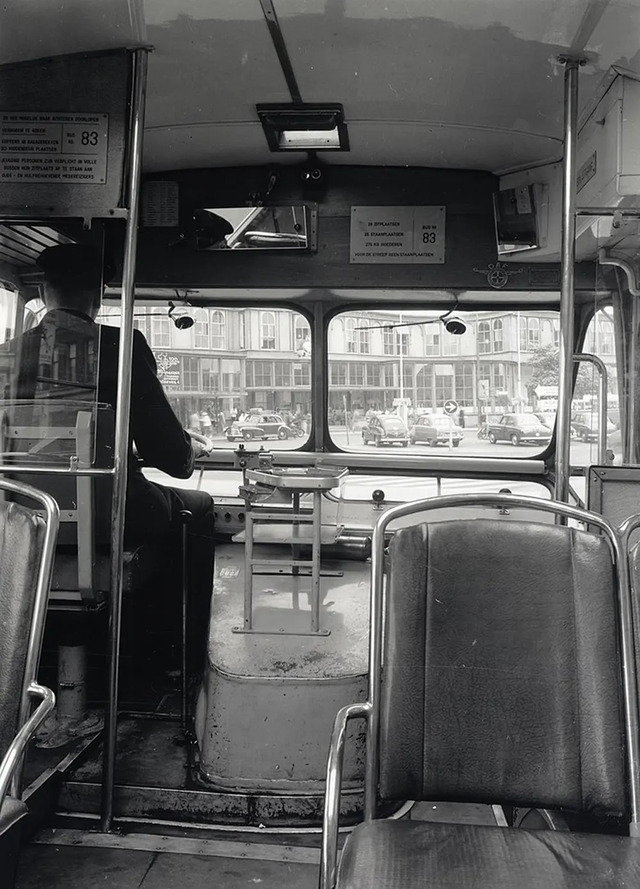
The DAF-Domburg Bus, designed with a removable engine, featured a unique engine bay layout that mimicked a drawer. This was not just an aesthetic choice but a functional one. The goal was simple: make the engine more accessible for mechanics, allowing them to remove, repair, and replace parts without the usual cumbersome procedures that traditionally involved disassembling the entire vehicle. This innovative “drawer-style” engine bay was intended to provide mechanics with seamless access, reducing repair times and increasing efficiency.
While the design seemed like a brilliant step forward, it quickly became clear that the execution faced several obstacles. The engine’s position and the drive shaft control system, which required a 5-feet slip yoke, introduced significant challenges. The slide-out engine concept, despite being intended to simplify repairs, turned out to be less reliable and more complicated than anticipated.
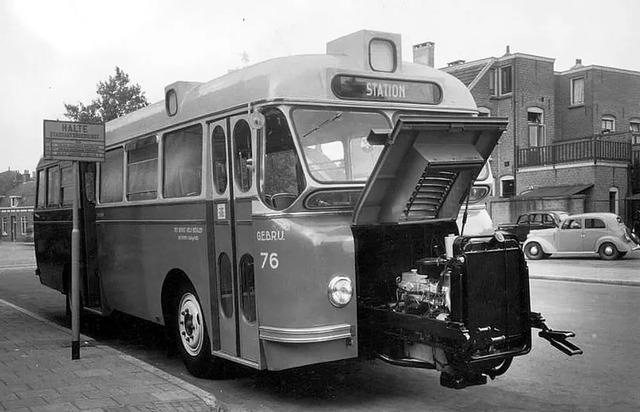
Video
Watch the video to see the oldest DAF still in operation – a true piece of history in motion!
The Technical Challenges: A Step Too Far
The complexities inherent in the slide-out engine concept ultimately made the system more problematic than it was worth. The engine bay was designed to allow for easy removal of the engine; however, the integration of the long slip yoke necessary to control the drive shaft added complexity to the overall design. The slide-out system was meant to simplify repairs, but the drive shaft became a significant problem, as it created unnecessary wear and tear on the vehicle and led to performance issues.
The project of removing and replacing engines through a slide-out system turned out to be less efficient than initially expected. The practicality of this innovation proved difficult when faced with the demands of real-world vehicle use. The system not only slowed down repairs but also added to the maintenance complexities due to the added mechanical components.
Despite these challenges, the 1949 DAF-Domburg Bus provided a valuable lesson: that even the most innovative designs need to balance functionality with simplicity. A good maintenance design should reduce repair times, not introduce new complications that could cost more in the long run.

Automotive Engineering: A Balance Between Innovation and Practicality
When designing vehicles, especially commercial ones, engineers must find a delicate balance between introducing new technologies and ensuring that those technologies remain practical for everyday use. While innovation is at the core of technological advancement, it must always be coupled with ease of use, particularly in the world of vehicle maintenance.
For example, when engineers design vehicles with complicated engine layouts or sophisticated technologies, they often find that these features increase the difficulty of maintenance. Such vehicles may incur longer downtimes and higher repair costs, defeating the very purpose of the innovation. On the other hand, simpler designs allow mechanics to perform quicker repairs, which is crucial for commercial vehicle operators who need to minimize vehicle downtime to maximize productivity.
The 1949 DAF-Domburg Bus, while groundbreaking in its design, ultimately serves as a reminder that automotive innovation must take into account the long-term usability and cost-effectiveness of the solution.
The Evolution of DAF Trucks: From Trailers to Revolutionizing the Trucking Industry
DAF Trucks was founded in 1928 by Hub van Doorne and his brother Wim van Doorne as “Van Doorne’s Aanhangwagen Fabriek” (Van Doorne’s Trailer Factory) in Eindhoven, Netherlands. Initially focused on building trailers and semi-trailers, the company quickly expanded its scope and vision, stepping into the truck manufacturing industry.
The 1949 DAF-Domburg Bus represents an important moment in the company’s early days of experimentation with different vehicle designs. While the bus did not go on to have a lasting legacy, it was an important part of DAF’s innovative culture. Later, DAF would introduce its first commercial truck, the DAF A30, in the 1950s, which was notable for its revolutionary continuously variable transmission (CVT) system. This smooth and automatic gear-shifting technology further cemented DAF’s reputation as a forward-thinking company in the automotive sector.
DAF’s Impact on the Trucking Industry and Future Innovations

As the years went by, DAF Trucks continued to develop high-quality, reliable, and fuel-efficient trucks, building a strong presence in European markets. With an emphasis on enhancing engine technology and fuel efficiency, DAF’s innovations played a critical role in shaping the future of trucking and commercial vehicles.
Throughout the decades, DAF’s commitment to innovation continued, with developments in environmentally friendly technologies and cutting-edge engine designs. The company’s ongoing focus on fuel efficiency and cost-effective operations helped shape the future of commercial vehicle design.
Challenges Faced by DAF and Strategic Growth
Despite its reputation for engineering excellence, DAF Trucks faced significant challenges in the 1970s, particularly financial difficulties that led to the split of its car and truck divisions. This period of struggle did not diminish DAF’s position in the market, as the company re-established its truck division as DAF Trucks N.V. and partnered with PACCAR Inc., a British-based company, to gain the resources needed to grow and expand further.
This partnership allowed DAF Trucks to continue its development and provide a range of top-tier commercial vehicles to meet the needs of various industries, including long-haul transport, construction, and distribution.

Video
Watch the video of a bus road test from 1957 – a fascinating look at vintage transportation!
Conclusion: The Legacy of the 1949 DAF-Domburg Bus in Modern Automotive Design
The 1949 DAF-Domburg Bus may not have achieved mass production, but its unique engine layout was an important moment in automotive history. It highlighted the innovative thinking of DAF’s engineers and set the stage for future vehicle designs that would focus on practical solutions for both performance and ease of maintenance. Though the slide-out engine concept presented significant challenges, it helped engineers understand the importance of simplicity in vehicle design—a principle that continues to shape the industry today.
The DAF-Domburg Bus represents an era of experimentation and ambition that defined the early years of DAF Trucks, a company that would go on to revolutionize the trucking industry with its innovative and efficient designs.
As the automotive world continues to evolve, the lessons learned from the 1949 DAF-Domburg Bus will likely continue to influence future vehicle designs that prioritize maintenance ease, reliability, and practicality.
